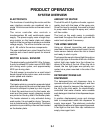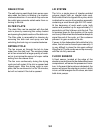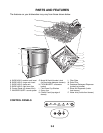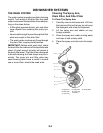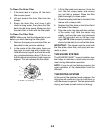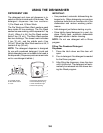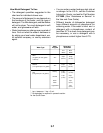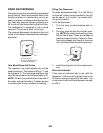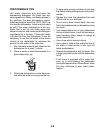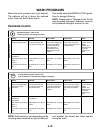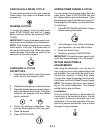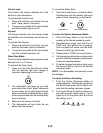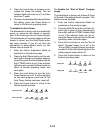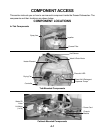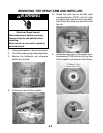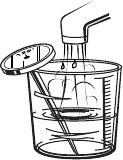
3-9
PERFORMANCE TIPS
Hot water dissolves and activates the
dishwashing detergent. Hot water also dis-
solves grease on dishes, and helps glasses to
dry spot-free. For best dishwashing results,
water temperature should be 120°F (49°C) as
it enters the dishwasher. Loads may not wash
as well if the water temperature is too low.
Water that is too hot can make some soils
harder to remove, and cause certain detergent
ingredients not to function. If the water heater
is located far from the dishwasher, it may be
necessary to run the hot water at the faucet
closest to the dishwasher to minimize the
amount of cold water in the water line.
1. Run hot water at the faucet closest to the
dishwasher for at least 1 minute.
2. Place a candy or meat thermometer in a
glass measuring cup.
• To save water, energy, and time, do not rinse
the dishes before placing them into the dish-
washer.
• Choose the cycle that describes the most
difficult soil on your dishload.
• Do not worry about mixed loads. Any item
that is dishwasher safe can be washed using
any cycle.
• Use a delay feature to run your dishwasher
during off-peak hours. Local utilities recom-
mend avoiding heavy usage of energy at
certain times of day.
• Use a rinse aid to improve drying.
• Use cycles or options that add extra heat to
the wash or rinse portion of the cycle for
better performance.
• Operate the dishwasher with full loads. Run
a rinse cycle after meals until the dishwasher
is full.
• If the home is equipped with a water soft-
ener, try to avoid starting the dishwasher
during the regeneration of the softener, since
this may contribute to poor wash perfor-
mance.
3. Check the temperature on the thermom-
eter while the water is running into the cup.



